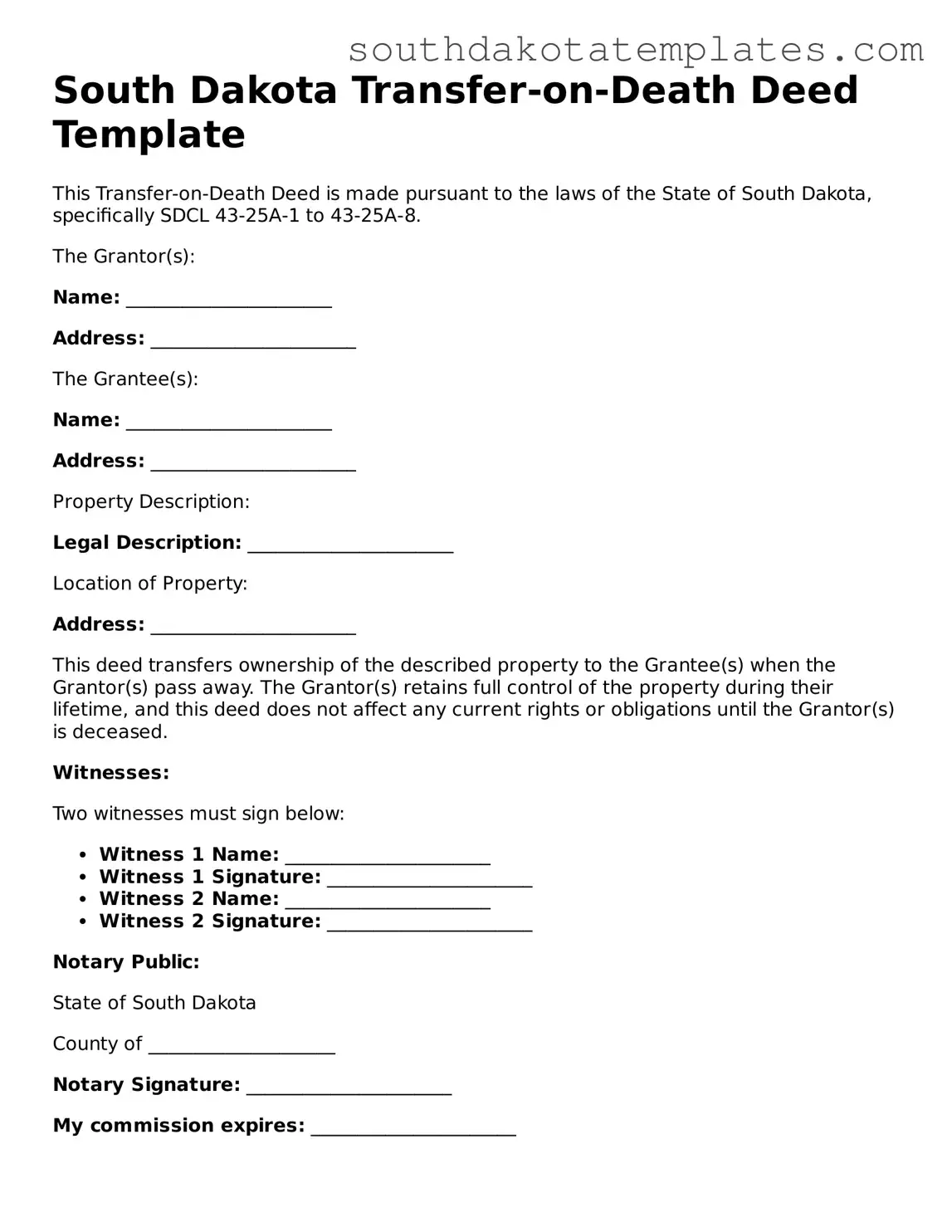The South Dakota Transfer-on-Death Deed (TODD) form serves as a valuable tool for property owners looking to streamline the transfer of real estate upon their passing. This legal document allows individuals to designate one or more beneficiaries who will automatically inherit the property without the need for probate. By filling out this form, property owners can maintain control of their assets during their lifetime while ensuring a smooth transition for their heirs. The TODD form requires specific information, including the property description and the names of the beneficiaries, to be valid. Importantly, it does not take effect until the owner's death, meaning that the property remains under the owner's control until that time. South Dakota law provides guidelines on how to properly execute and record the deed, making it essential for individuals to follow these steps to avoid complications. Understanding the nuances of the Transfer-on-Death Deed can help individuals make informed decisions about their estate planning and provide peace of mind for both themselves and their loved ones.
